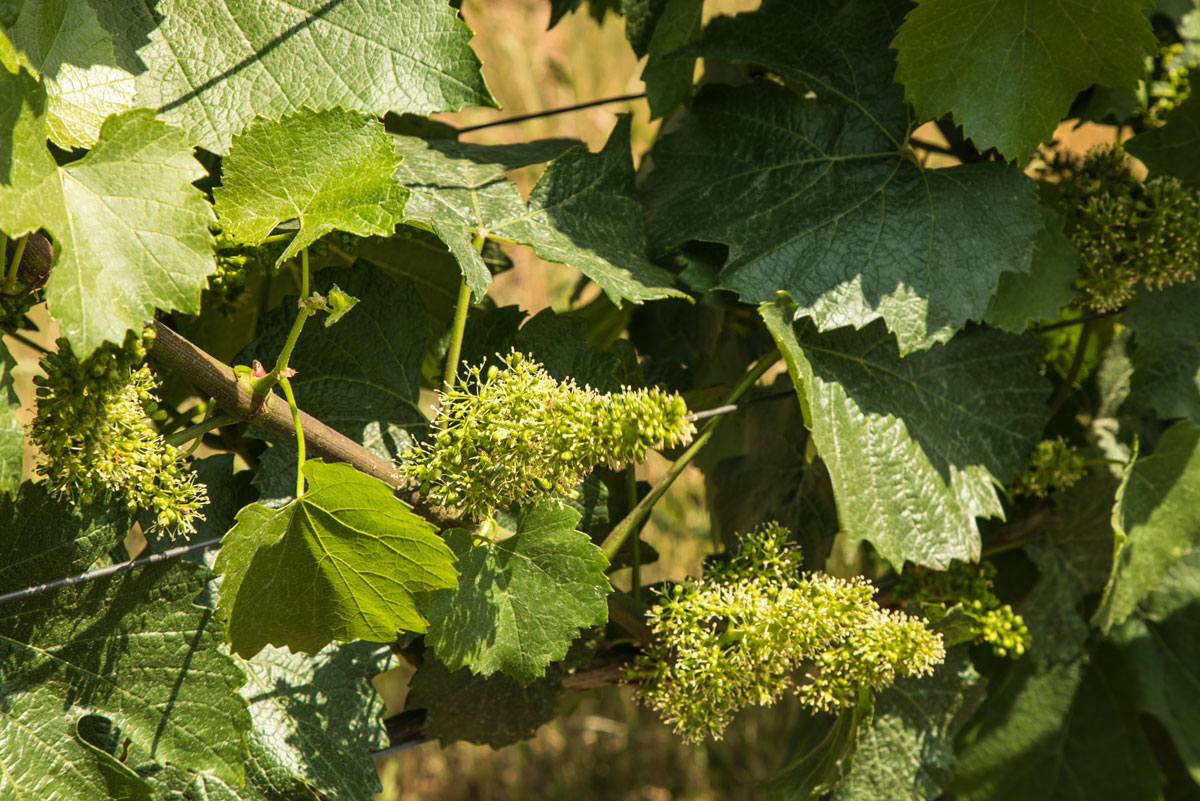Hey bud, how’s it growing?
As the sun breaks from the clouds and tasting room guests rise from their rain-induced hibernations, the countdown to harvest begins. In the vineyard, the Dundee Hills Pinot Noir is starting to show signs of individual florets while their neighbor, the Dundee Hills Chardonnay, has already reached full bloom. Flowering is a crucial time for the vineyard as wind, rain and cold weather could dislodge the delicate flowers. Roughly 400 feet up the hillside, Pinot Noir for our Legacy tier wines shows a much slower rate of development. Vice President of Vineyard Operations, Jason Tosch, points to elevation as the primary explanation for bloom disparity.
Our vineyard is divided into 101 meticulously farmed sections of seven varieties, ranging 220 to 640 feet in elevation. Just like the suntan Oregonians desperately need at this time of year, grapes at higher elevations develop an increased pigment concentration resulting in firm tannins, vivid color, and thicker skin to weather climate changes. The concentrated sunlight and cooler temperatures experienced by grapes at higher altitudes slows the ripening process and creates an excellent balance between flavor-activating sugars, acidity, and other chemical complexities. The combination of elevation and our volcanic soil help sweep rainfall from the roots and protect the vine.
Elevation creates unique differences between each of our wine tiers and our vintages, giving us an opportunity to showcase the many expressions of our vineyard. Click here to learn more about our vineyard with our interactive map.
